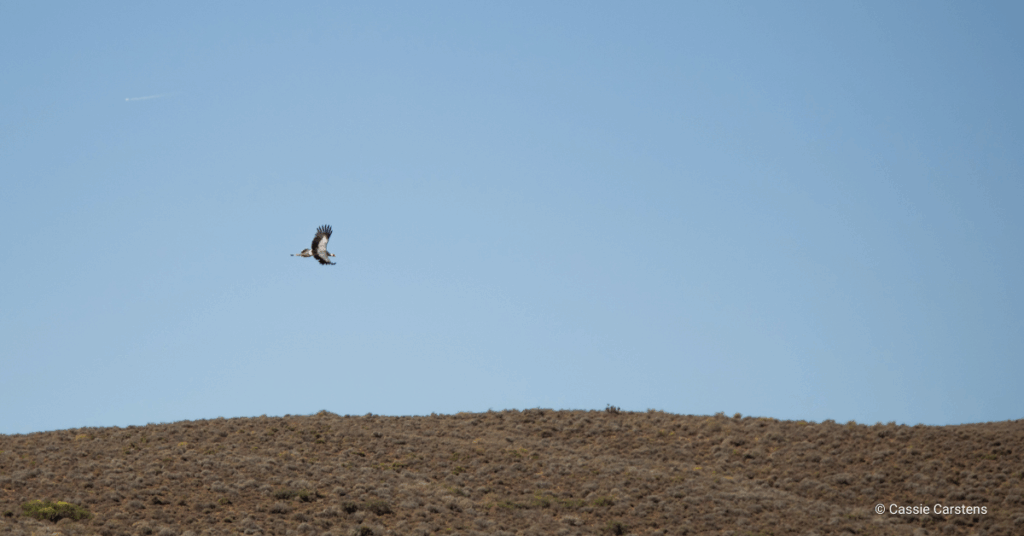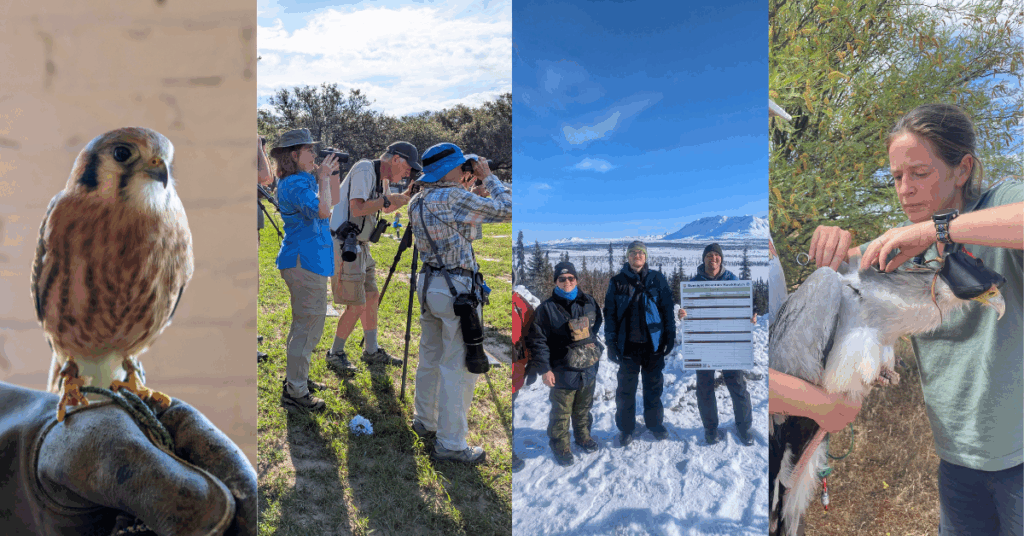Accipitrines (formerly grouped as accipiters before the taxonomic divisions in 2024) are famously tough to tell apart—even giving raptor experts pause. Before we dive in, we want to drive home that sometimes it will be impossible to make a firm ID call. Leaving an ID at “accipitrine” is perfectly okay, especially when you don’t have the field markers visible that you need. We hope this blog serves as a helpful resource when you are trying to answer this age-old ID conundrum.
A bit of background
We are talking about three accipitrines in North America (from smallest to largest): the Sharp-shinned Hawk, Cooper’s Hawk*, and American Goshawk. These birds are colloquially called forest hawks because they prefer to nest and hunt in forest habitats. Their bodies are made to thrive in this environment, having short wings and a long rudder-like tail that helps them maneuver through the dense canopy. They feed mostly on birds, which has led Cooper’s and Sharp-shinned Hawks, in particular, to adapt to suburban habitats and frequent your backyard bird feeder. Each of these species, especially Cooper’s and Sharp-shinned Hawks, have large overlapping ranges. Below, you can see the range maps of these three species.
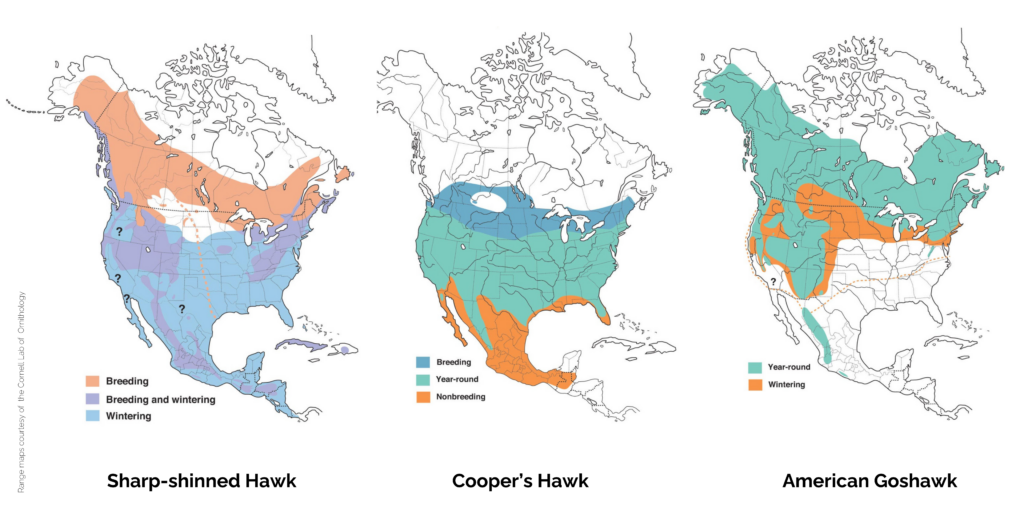
In Flight ID
For hawkwatchers like us, we are most often looking at accipitrines high in the sky during migration. To tell who’s who from afar, you are going to want to look mainly at silhouette and flight patterns. Flight behavior is one of those things where you just have to spend the time outside watching birds. It will come with practice!
When identifying an accipitrine by shape, you are generally looking for short, rounded wings and a long tail.

| Species | Shape | Flight Behavior |
|---|---|---|
| Sharp-shinned Hawk | – Stocky and compact – Scrunched wings with wrists shrugged up, head should barely surpass the leading edge of the wings – Typically squared tail when folded** | – Buoyant and highly maneuverable but unsteady in moderate to high winds – Quick, snappy wing beats interspersed with short glides – Flapping is mostly just from the wrist onward rather than the full wing – Flies in tight circles |
| Cooper’s Hawk | – Proportionately longer, narrower wings and longer tail, tubular body – Larger head that projects further out from the wings than Sharp-shinned Hawk – Typically rounded tail when folded due to graduated tail feather lengths** | – Steady fliers, adept at soaring and less influenced by wind – Quick, stiff wing beats using the full wing interspersed with short glides – Slight dihedral |
| American Goshawk | – Generally large throughout with bulky chest – Head projects beyond wings – Long, broad tail | – Steady and powerful in flight – Soar on flat wings in wide circles, glide with wings slightly drooped – Wingbeats are less stiff and more elevated than Cooper’s Hawk, sometimes appears buteo-like |
Up Close ID
Should you be lucky enough to see one of these birds up close, you can add more field markers to your toolbox! A note that eye color is also a helpful feature to look at when trying to take your ID a step further and age an individual. Sometimes, however, eye color does not match the plumage you expect. You can read more about how eye color can aid in aging in this blog by the late raptor expert Jerry Liguori.
Adult Accipitrines
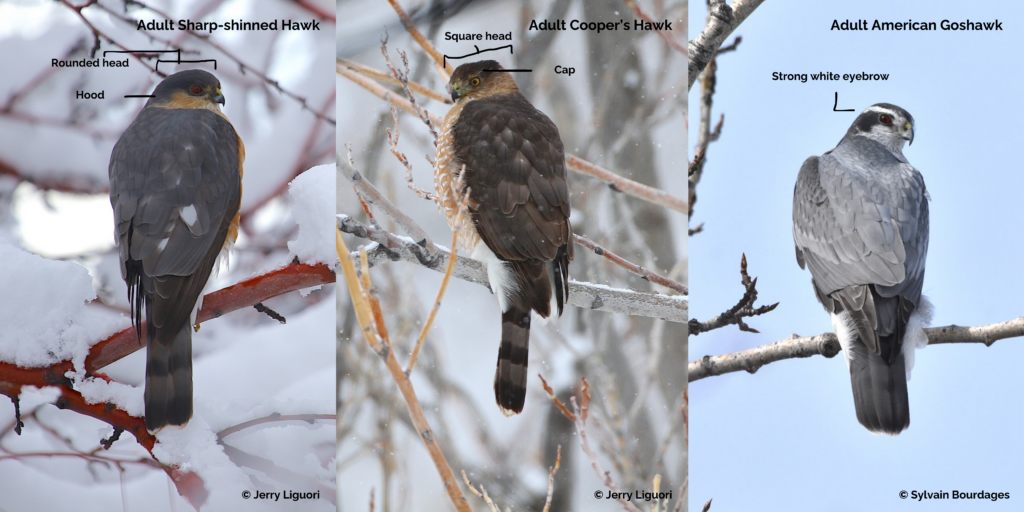
Juvenile Accipitrines

| Species | Juvenile Plumage | Adult Plumage |
|---|---|---|
| Sharp-shinned Hawk | – Buffy below with reddish-brown streaking – Streaking is typically “messier” than and lighter than Cooper’s | – Barred rufous on white below with white undertail coverts – Dark “hood” from top of head down the nape |
| Cooper’s Hawk | – Whitish-buff below with narrow, dark brown streaking in a tear drop shape – Typically show least prominent streaking of the accipitrines – Tawny head | – Barred rufous on white below with white undertail coverts – Black-ish “cap” and pale nape |
| American Goshawk | – Whitish below with extensive dark streaking throughout, even on the undertail coverts – Topside is brown with pale mottling along the upperwing coverts that forms a narrow “bar” – Marked undertail coverts -Wavy tail bands | – Pale whitish-gray below with faint, black barring on the underbody – Topside is blue-gray with a black head and bold white eye-line/eyebrow |
Sharp-shinned vs. Cooper’s Hawk
Despite all these tips, you may still have a hard time narrowing an ID down between a Sharp-shinned Hawk and a Cooper’s Hawk. You can look to an individual’s legs as Sharp-shinned Hawks have thin, delicate legs, whereas Cooper’s Hawks have thicker, stronger-looking legs. It is very difficult to confidently make these size comparisons, especially when you aren’t looking at a Cooper’s Hawk and a Sharp-shinned Hawk side by side. This type of IDing is less reliable and should be used with caution alongside other field markers. Additionally, Sharp-shinned Hawks tend to have a more wide-eyed expression compared to a Cooper’s Hawk’s angry appearance. Similarly, Sharp-shinned Hawks have a rounder head shape, and Cooper’s Hawks tend to have a more square/blocky shape. A Sharp-shinned Hawk’s eye location is also closer to the center of the head, whereas a Cooper’s is closer to their bill.
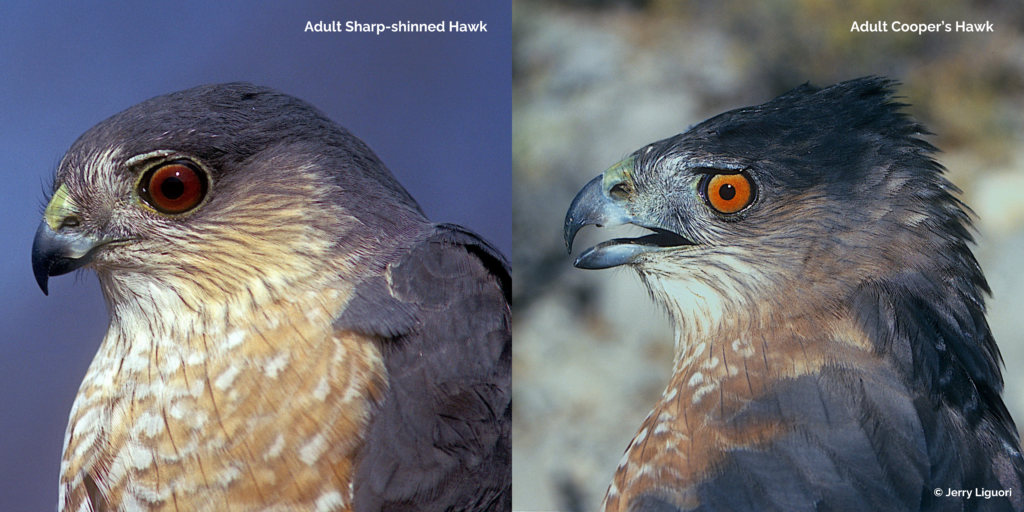
Left wanting more?
Still lacking confidence with your ID? We have a few more resources for you! The Cornell Lab has put together a photo quiz that will let you put your skills to the test, which we’ve found extremely helpful. We also put together a video ID series, including one focused on accipitrines, which you can find on our YouTube. Jerry Liguori’s book Hawks from Every Angle can provide lots of tips on IDing hawks in flight. Hawks at a Distance will provide the next level up with many far-away examples of accipitrine silhouettes that are realistic to what you would see looking up at a migration site. We also can’t help but recommend our free Raptor ID app (Apple and Android), which includes narrated videos by Jerry Liguori walking you through some of the flight behaviors.
Once again, we want to remind you that it is absolutely okay to not ID a bird down to species. Taking the ID to accipitrine is a feat in itself and can be better than falsely making a species ID just for the sake of it. If you’ve visited our migration sites, you may have seen our count boards list “unidentified accipiter” just for this very reason.
*Note that the Cooper’s Hawk may be getting a new name. The American Ornithological Society is renaming all birds named after people. You can read more about this change here.
This blog was written by Sammy Riccio, HWI’s Communications Manager. You can learn more about Sammy here.


